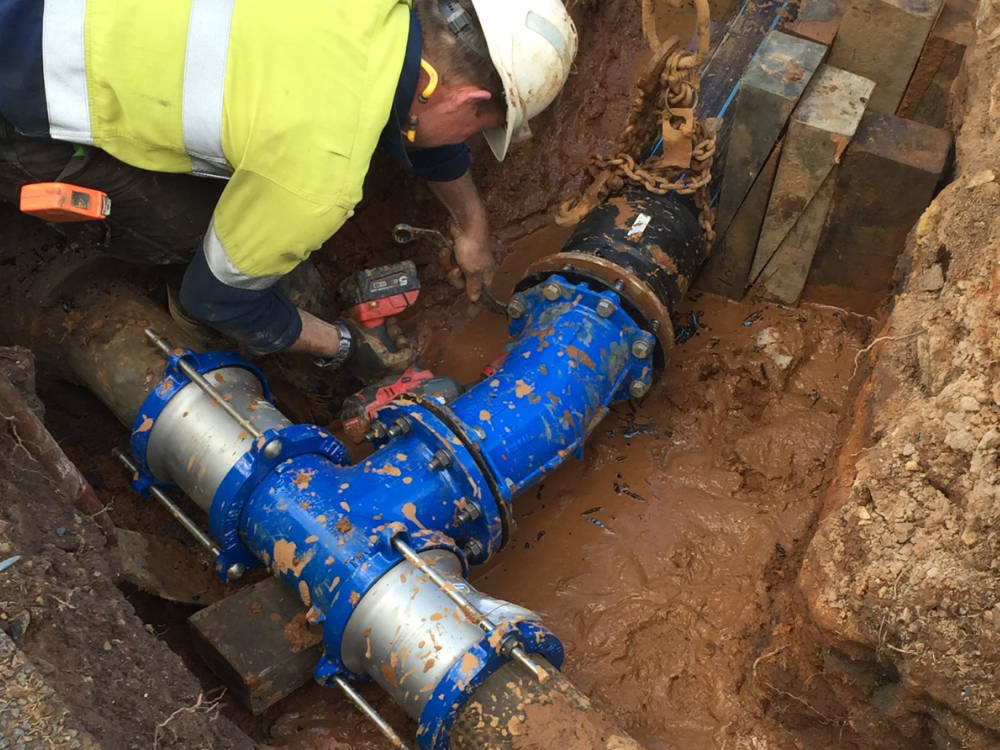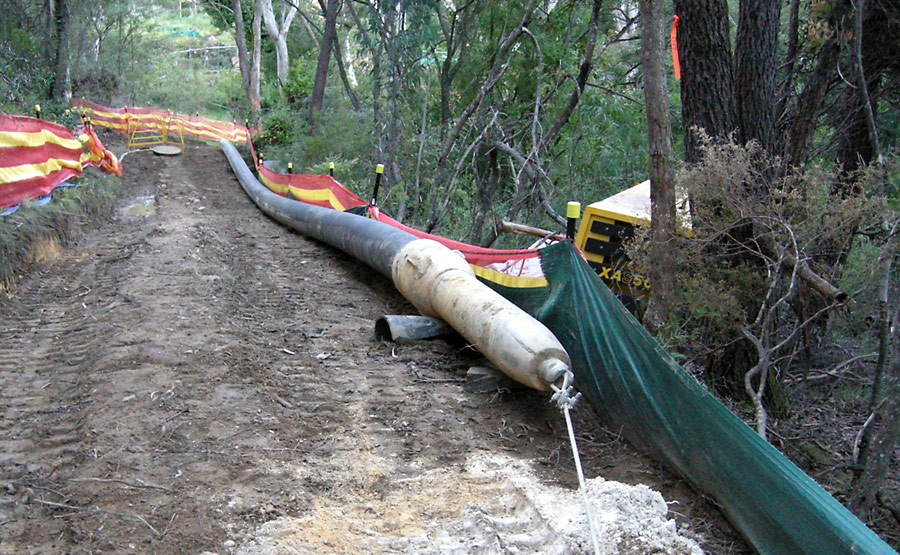Downer PipeTech offers two methods of pipe bursting – Hydraulic and Pneumatic.
Pipe bursting or pipe cracking is a well-established trenchless method that is widely used for the replacement of existing and deteriorated pipe with a new pipe of same or larger diameter. Pipe bursting is quite different to insitu lining of pipelines in that it allows for the installation of a brand new, factory manufactured pipe.
Overview
Pipe bursting technique involves the insertion of a conically shaped bursting head into the existing pipe to shatter the existing pipe and displace its fragments into the surrounding soil by pneumatic or hydraulic action. A new pipe is simultaneously pulled behind the bursting head then both the new pipe and bursting head are launched from an entry pit. The cable or pulling rod is then pulled from a pulling shaft or exit pit. It is also possible to launch and exit via existing structures such as manholes thereby reducing the extent of excavation required.
Applications & Benefits
There are two main methods of pipe bursting – Hydraulic or Pneumatic. Hydraulic equipment is primarily used for water pipeline renewals whereas Pneumatic equipment is primarily suited to sewer pipeline renewals.
Pipe bursting can be applied where the host pipe is made of cast iron, clay, concrete, PVC, asbestos cement, or even previously lined pipes. In sewer applications, the length of a run is typically from manhole to manhole or even through manholes, depending on the specific application. For water mains, the length of a run is typically determined by the distance between hydrants, tees or valve locations.
Pipe Bursting projects
Pipe bursting | Canberra Avenue, ACT
Working with Icon Water, Downer PipeTech was engaged to renew a 6.7 km section of existing (CICL) Cast Iron main pipe in [...]
Pipe Bursting | Blue Mountains, NSW
This project involved the upsizing of the existing sewer network within the community of Blackheath using pipe bursting techniques. The objective of [...]


